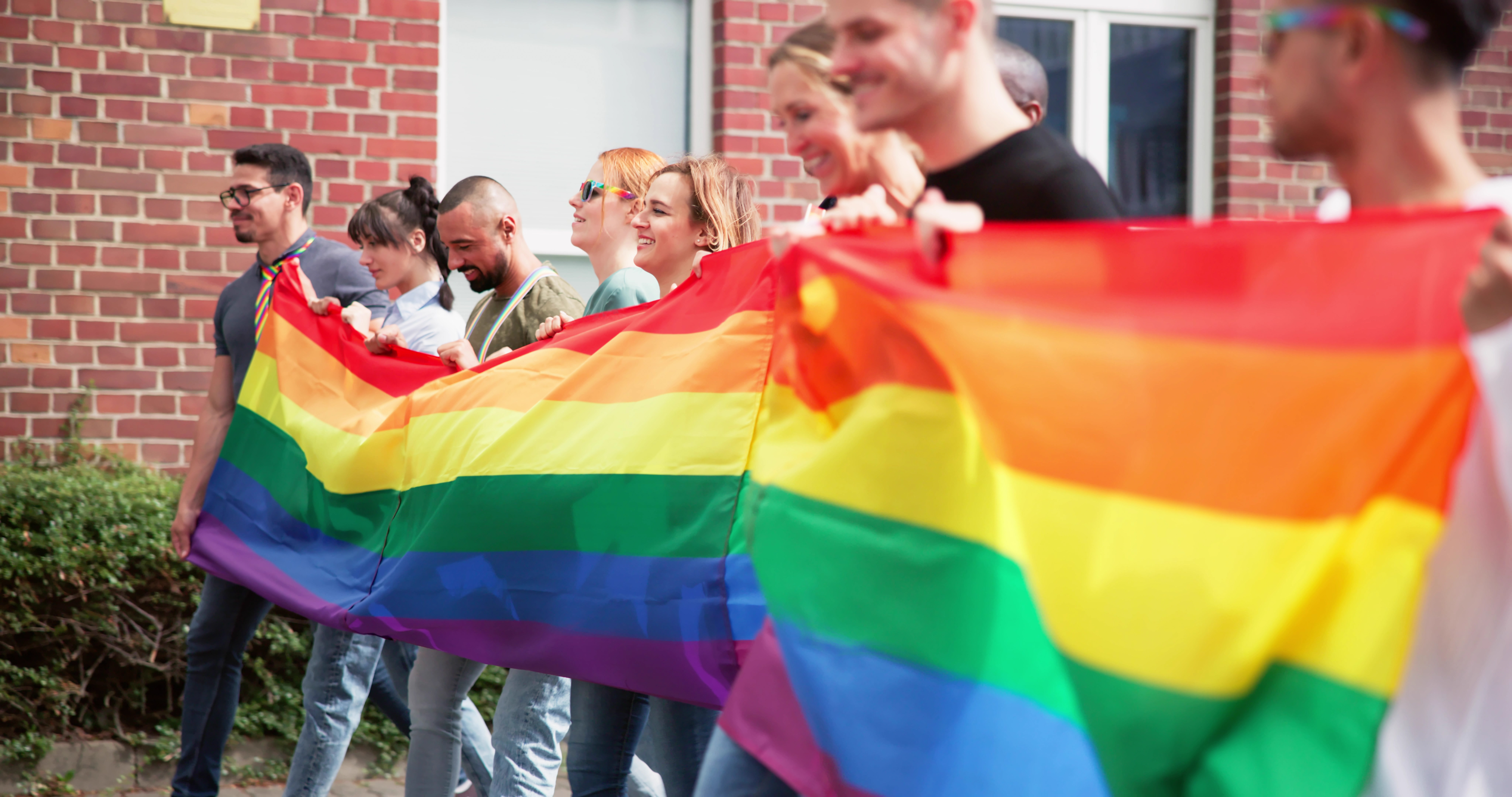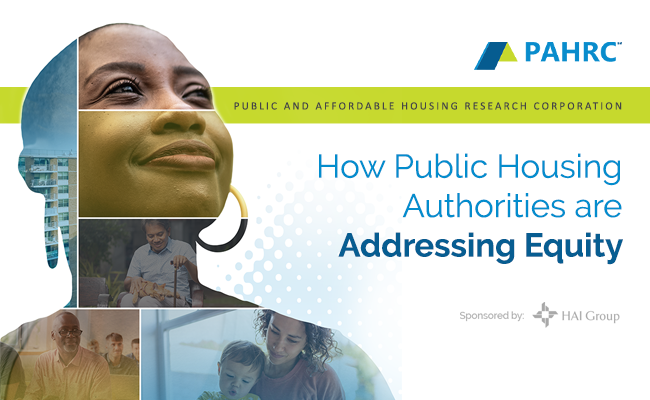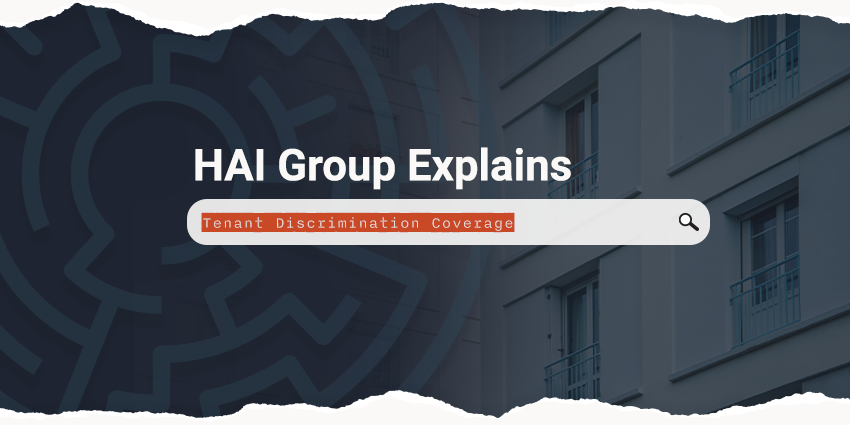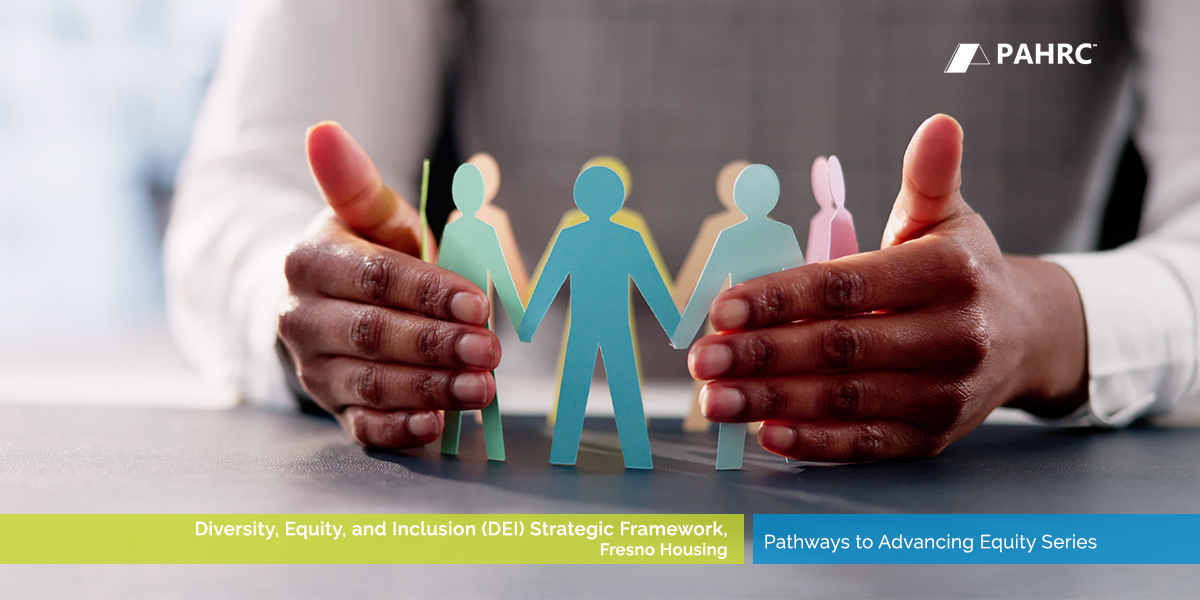Public housing authorities (PHAs) have an obligation to affirmatively further fair housing by combatting discrimination and taking steps to create safe and inclusive communities. Often, specific communities get left behind in efforts to promote diversity, equity, and inclusion. Lesbian, gay, bisexual, transgender, and queer (LGBTQ+) individuals face hurdles to accessing safe, fair, and affordable housing. Yet, discussions to further fair housing often do not include them.
Are you a PHA looking to make all individuals feel safe and comfortable at your properties or looking to develop LGBTQ+-focused properties? In this blog, learn about the hurdles LGBTQ+ face and advice from peers to further fair, safe, and affordable housing for all.
The Public and Affordable Housing Research Corporation (PAHRC) is a member of the HAI Group family of companies. PAHRC’s work focuses on the impact that affordable homes bring to families and communities. In this blog, Cate Asp, PAHRC’s research analyst, examines the challenges LGBTQ+ individuals face regarding securing safe and affordable housing. She also shares practical solutions and advice for PHAs looking to help their residents feel comfortable and thrive in their homes.
History
The LGBTQ+ community has a long and rich history. In 1969, activists at the Stonewall Inn staged an almost week-long protest against the unfair treatment of LGBTQ+ individuals and families. This laid the groundwork for activism that achieved protections for LGBTQ+ people across the country. Despite this, the legacy of homophobic and transphobic attitudes and policies persists today.
LGBTQ+ people face discrimination in accessing affordable housing. Here are some of the ways they have met bias:
- LGBTQ+ youth are disproportionately unhoused and face increased health risks compared to heterosexual, cisgender youth. Studies have found that LGBTQ+ youth account for 40% of unhoused children today - despite representing a fraction of the population.
- LGBTQ+ adults are more likely to live in poverty and are less likely to own their own home than their non-LGBTQ+ counterparts. This gap is more significant when other intersecting identities are considered, such as race and sex.
- Discrimination against LGBTQ+ includes harassment when trying to receive supportive services, getting turned away or charged higher rents when seeking places to live, having lower approval rates for loans and higher interest or fees, and more.
- A HUD-sponsored 2021 study found that while lesbian women are treated comparably to heterosexual women, both gay men and transgender individuals get told about fewer available rental units than their cisgender, heterosexual counterparts.
Today, a patchwork of policies protects LBGTQ+ individuals from housing discrimination. Twenty-three states enacted laws protecting LGBTQ+ individuals from housing discrimination. While the 1968 Fair Housing Act does not explicitly protect LGBTQ+ individuals from housing discrimination, the Supreme Court ruled in Bostock v. Clayton County that federal laws preventing discrimination based on sex also include sexual orientation and gender expression. Following this legal precedent, President Biden issued an executive order requiring HUD’s enforcement of the Fair Housing Act to extend housing discrimination protections based on sexual orientation and gender expression. However, future administrations could revoke this executive order, limiting the reach and enforcement of these protections.
How PHAs can help their LGBTQ+ residents
PHAs can make a difference in the lives of their residents through supportive services, including programs, practices, and policies that improve resident outcomes. Whether through employee training or targeted developments, PHAs have opportunities to lay the groundwork for a more inclusive environment for their LGBTQ+ residents.
There are many resources for PHAs looking to build or expand their strategies supporting LGBTQ+ residents:
- SAGE’s report advises equitably serving LGBTQ+ individuals and developing properties targeting this community.
- HUD’s LGBTQIA+ Fair Housing Toolkit describes fair housing rights and features the best policies and practices to serve the LGBTQ+ community.
- NLIHC’s Summer 2023 Tenant Talk provides context on the history of LGBTQ+ activism, the struggles this population continues to face, and explanations of common LGBTQ+ language.
Consider the following advice from these resources to promote inclusivity and safety for all:
- Engage with LGBTQ+ community members: Continuously engaging with LGBTQ+ community members on programs, developments, policy changes, and their challenges can help your organization create an inclusive environment and build trust with future residents.
- Develop partnerships: Partnerships are often the cornerstone of PHA programs. Partnering with organizations committed to supporting LGBTQ+ individuals is essential to equitably serving LGBTQ+ people.
- Create affirmative marketing: Marketing that clearly outlines that your PHA will not tolerate discrimination and that equity is central to your organization’s mission can help LGBTQ+ individuals feel safe and welcome. Advertising in spaces that already have shown they are safe for LGBTQ+ people, like LGBTQ+ centers, affirming churches, clubs, and LGBTQ+ publications, can help build trust.
- Share resources for LGBTQ+ people: Spreading the word about local resources that could specifically help LGBTQ+ residents locate service providers with a supportive environment that meets their needs. For example, for any PHA or advocacy group in the Cleveland, Ohio, area, Metro Health’s pride network would be a resource to highlight to your LGBTQ+ residents.
- Develop inclusive forms: When developing forms, use inclusive language that considers residents of all races, ethnicities, gender identities, sexualities, disabilities, and more. When collecting data, avoid asking residents questions about their gender identity and sexual orientation when possible. If you must ask for this information, allow applicants to write in their answers.
- Include LGBTQ+ in fair housing statements: Formalizing a fair housing statement that includes LGBTQ+ people can demonstrate that your properties are safe and inclusive and that your organization is committed to furthering equity and preventing discrimination. Once developed, you can publicly share it on your website and at your developments by posting fair housing posters.
- Train staff: Continuous learning can help keep staff updated with best practices for serving residents from all backgrounds. To center equity and promote fair housing, Cuyahoga Metropolitan Housing Authority implemented staff LGBTQ+ training. Looking for training resources? Consider using HUD’s LGBTQ+ training scenarios to educate staff.
- Model the behavior for staff and residents to replicate: Introducing yourself with your pronouns or adding your pronouns to your email signature and your name in virtual meetings can make others feel comfortable doing the same. Small changes like this are resource-friendly ways to make residents more comfortable being their true selves in their homes.
- Incorporate inclusive building designs: Incorporating trauma-informed design principles, well-lit areas, gender-neutral public bathrooms in public places, and ensuring units are accessible can help residents of all backgrounds feel safe inside and outside their homes.
Developing properties inclusive to LGBTQ+ people? Look towards peers for inspiration
It may feel like these hurdles are too large for any PHA or developer to make a difference, but many developers have paved the way for LGBTQ+ inclusive housing. Looking for inspiration? Check out two examples:
Town Hall Apartments: The journey of Town Hall Apartments began in 2007 when the Center on Halsted, a community center supporting LGBTQ+ people in Chicago, IL, noticed a vacant plot near them. Partnering with the Heartland Alliance, a human rights advocacy group and housing developer, they gathered information to understand community needs better and garnered political and community support. The Heartland Alliance and Center on Halsted partnered with the Chicago Housing Authority to open Town Hall Apartments in 2014.
With wrap-around services, design centered on community engagement and opportunities, a “harassment addendum” in the lease establishing harassment as grounds for eviction, and more, this development strives to improve resident outcomes and make all tenants feel safe in their homes. As of 2017, LGBTQ+ residents occupied at least 60% of Town Hall Apartments’ units. The 9% Low-Income Housing Tax Credits funded the project, and all units have Project-based Section 8 provided by the Chicago Housing Authority, making them deeply affordable.
Spirit on Lake Apartments: In 2005, three members of the Spirit of The Lakes United Church of Christ created a group to educate their local community about issues facing LGBTQ+ individuals and seniors. This group partnered with the Powderhorn Residence Group, a local nonprofit, and Everwood Development, a developer, to bring their vision of creating a housing development dedicated to serving the LGBTQ+ community to life.
Spirit on Lake Apartments opened in 2013, welcoming its first residents into the 46-unit complex. The complex has hosted speakers to discuss topics impacting LGBTQ+ people, including faith-related challenges for various religious backgrounds. Quatrefoil, an LGBTQ+ dedicated library, occupies the first floor of the building, supporting community engagement, learning, and connection. At its opening, LGBTQ+ older adults occupied 65% of Spirit on Lake Apartments. Funding was acquired through the 4% Low-Income Housing Tax Credits program. A mix of Project-Based Vouchers and Housing Choice Vouchers further subsidize the operating costs and rent of the property.
--
Let’s take strides to commit to furthering equity for LGBTQ+ residents by investing in resident services, developments, policies, practices, and partnerships with LGBTQ+ people in mind. By engaging with LGBTQ+ people in your community and developing strategies that position your organization to serve this population equitably, you take a step forward in your obligation to affirmatively further fair housing.
Interested in receiving PAHRC’s latest report, “PHA Pathways for Advancing Equity,” when it’s released? Be sure to sign up for email notifications.
This article is for general information only. HAI Group makes no representation or warranty about the accuracy or applicability of this information for any particular use or circumstance. Your use of this information is at your own discretion and risk. HAI Group and any author or contributor identified herein assume no responsibility for your use of this information. You should consult with your attorney or subject matter advisor before adopting any risk management strategy or policy.







